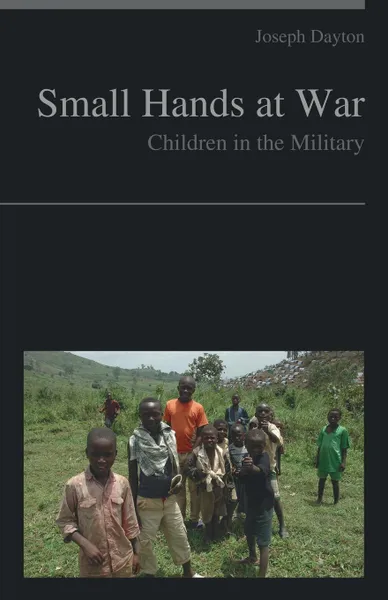Small Hands at War. Children in the Military 12+
Автор: Joseph Dayton
2018
124 страницы
Категория: Литература на иностранных языках
ISBN: 9789352979691
Язык: Английский
🔖 Children in the military are children (defined by the Convention on the Rights of the Child as persons under the age of 18) who are associated with military organisations, such as state armed forces and non-state armed groups. Throughout history and in many cultures, children have been involved in military campaigns. For example, thousands of children participated on all sides of the First World War and the Second World War. Children may be trained and used for combat, assigned to support roles such as porters or messengers, or used for tactical advantage as human shields or for political advantage in propaganda.
Children are easy targets for military recruitment due to their greater susceptibility to influence compared to adults. Some are recruited by force while others choose to join up, often to escape poverty or because they expect military life to offer a rite of passage to maturity.
Child recruits who survive armed conflict frequently suffer psychiatric illness, poor literacy and numeracy, and behavioural problems such as heightened aggression, leading to a high risk of poverty and unemployment in adulthood. Research in the UK and US has also found that the enlistment of adolescent children, even when they are not sent to war, is accompanied by a higher risk of attempted suicide, stress-related mental disorders, alcohol misuse, and violent behaviour.
A number of treaties have sought to curb the participation of children in armed conflicts. According to Child Soldiers International these agreements have helped to reduce child recruitment, but the practice remains widespread and children continue to participate in hostilities around the world. Some economically powerful nations continue to rely on military recruits aged 16 or 17, and the use of younger children in armed conflict has increased in recent years as militant Islamist movements and the groups fighting them recruited children in large numbers.
Children are easy targets for military recruitment due to their greater susceptibility to influence compared to adults. Some are recruited by force while others choose to join up, often to escape poverty or because they expect military life to offer a rite of passage to maturity.
Child recruits who survive armed conflict frequently suffer psychiatric illness, poor literacy and numeracy, and behavioural problems such as heightened aggression, leading to a high risk of poverty and unemployment in adulthood. Research in the UK and US has also found that the enlistment of adolescent children, even when they are not sent to war, is accompanied by a higher risk of attempted suicide, stress-related mental disorders, alcohol misuse, and violent behaviour.
A number of treaties have sought to curb the participation of children in armed conflicts. According to Child Soldiers International these agreements have helped to reduce child recruitment, but the practice remains widespread and children continue to participate in hostilities around the world. Some economically powerful nations continue to rely on military recruits aged 16 or 17, and the use of younger children in armed conflict has increased in recent years as militant Islamist movements and the groups fighting them recruited children in large numbers.
Мнения
